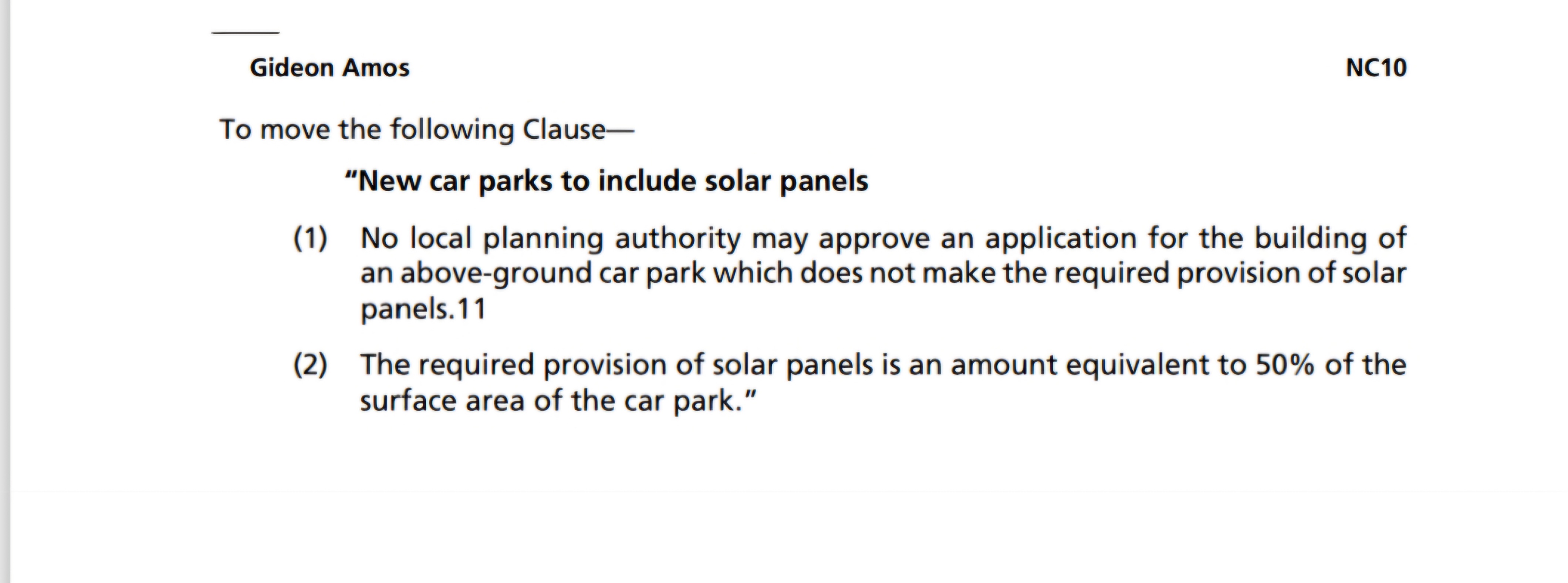Making Amends: The Planning & Infrastructure Bill heads into Committee Stage
So far,* Oldham Letter aside, it has been a relatively quiet week in the world of planning….. So it seems like a good time to check back in with the Planning & Infrastructure Bill.
The Bill passed its second reading on 24 March, after an epic five and a half hour** debate, and is now heading into committee stage in the House of Commons.
The Public Bills Committee will start to scrutinise the Bill on 24 April, with a hard stop date for consideration having been set for Thursday 22 May 2025.
All of which means that:
- The Government seems pretty darn determined to get PIB through the parliamentary process and onto the statute books as quickly as reasonably possible; and
- Now is the time to scroll through the amendment papers to see what changes various MPs are hoping to make to Labour's flagship planning bill. What baubles are our MPs trying to hang on the legislative christmas tree.
This post does just that.
Below is a selection of some of the amendments being proposed to the bill, as set out in the 9 April amendment paper.
As it is the Easter Holidays, and I am in a flippant mood, I have categorised them into three groups: The Sensible; The Understandable; and “Oh No, Not This Again!"
The Sensible
The first, and smallest group of amendments, are those which I suspect are likely to be wholly uncontroversial.
There aren't many of them. So far, I have found two:

and

After all who is going to object to prompt spending of the nature restoration fund and solar panels on car parks!
The Understandable
The next group of amendments are those that highlight concerns with elements of the bill - which may be controversial.
Many of these amendments are focused on Environmental Delivery Plans and the Nature Recovery Fund - which is understandable given just how big a change to the system these proposals represent.
Amongst these amendments are the following:

Designed to ensure that the BNG protections for irreplaceable habitats are carried through into EDPs.
And:

Which is intended to preserve the mitigation hierarchy in developments accessing or using the Nature Recovery Fund.
Given that EDPs and the Nature Recovery Fund featured heavily in the second reading debate - these amendments, or ones similar to them, are likely to feature strongly at the bills committee stage.
Oh No, Not This Again!
And finally, the largest group for the purposes of this blog (as I have the most to say about them). This selection represents, in many ways, the greatest hits of past ideas that were proposed (and occasionally failed) during the great LURA wars of 2022/2023.
Given that some of them were too radical for that particular Conservative goverment, the prospect of Labour taking them forward now seems… well… let's say ‘remote’
These include:

This amendment is particularly strange (and unlikely to succeed) as a very similar power has already made it onto the statute books. It just hasn't been fully brought into force as yet.
S.113 of LURA grants LPAs the power to decline to determine applications (for specific developments) in cases of earlier non-implementation and slow build out rates (in specific circumstances).
The developments and situations to which this power will apply are to be set out in secondary legislation, which has to be made, but nonetheless, it already exists.
Saying the same thing in a second piece of primary legislation seems…. well… a bit pointless.
Next we have these two:

And

Which seem to go together.
The idea of a third party right to appeal the grant of planning applications has been floating around for a very long time.
If accepted, it would result in a huge increase in both delays to the ability to build out planning permissions and the number of planning appeals…. even with the ability to kick out the hopeless and vexatious ones
This would be good for planning lawyers, but it also runs completely contrary to the entirety of Labour's reform agenda. Which is designed to speed up the planning process and increase the number of permissions granted.
As such, I think this is likely to be a non-starter.
And finally, we have this one:

Now, whilst I understand the emotional driver behind this one, the fact remains that, in the current climate, placing a statutory bar on renegotiating affordable housing for existing developments on viability grounds is likely to do more harm than good.
Outside of CIL, affordable housing is often the largest negotiable cost on a scheme - and in most CIL charging authorities, CIL is non-negotiable.
We are currently in very uncertain economic times - so this particular amendment risks not just failing to protect affordable housing delivery, but also preventing any housing on marginal sites coming forward at all.
This one is likely to be just too risky to adopt.
Conclusion
Now, there is no guarantee that any of these amendments will even be selected to be debated by the committee, let alone make it into the bill. In fact, parliamentary maths makes it highly unlikely that most of them will be taken forward.
Amendments are, however, always a useful insight into what aspects of a bill are of highest concern and the general strength of feeling amongst MPs. I.e. where the battle lines are likely to be drawn.
On the basis of the amendments set out above, it could be a very interesting fight indeed!
*she says, massively tempting fate….
**ish

